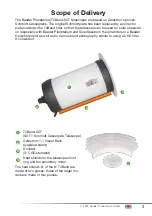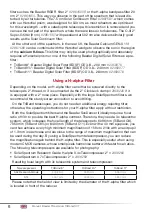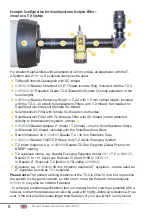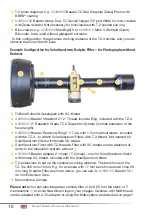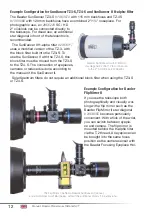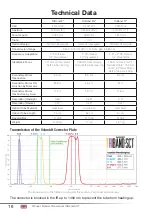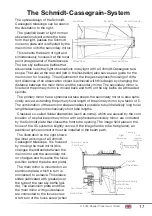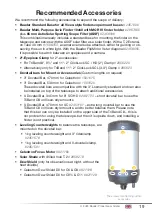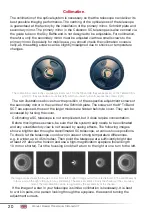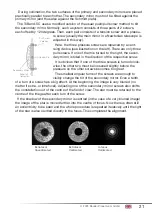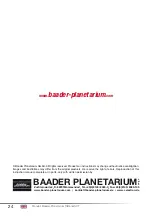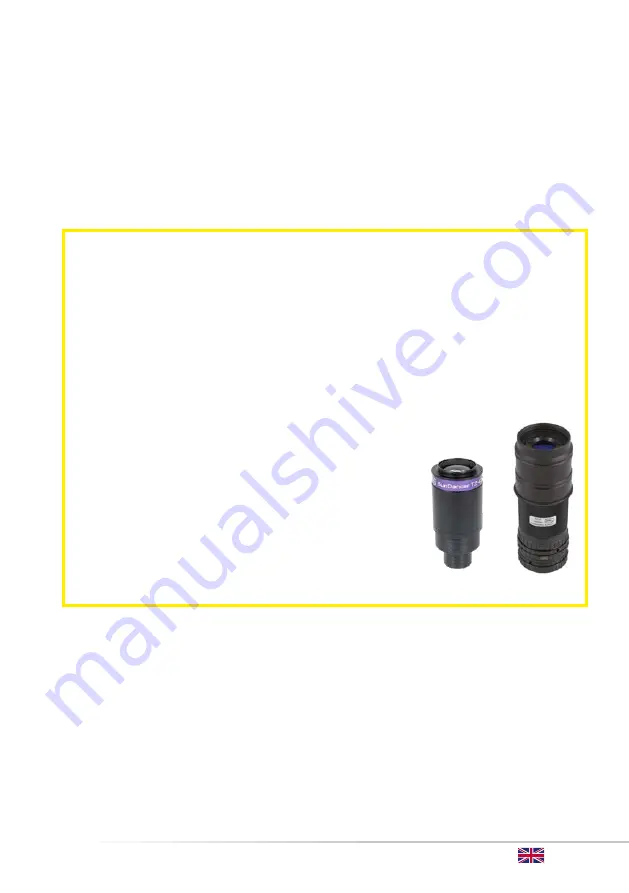
© 2023 Baader Planetarium GmbH
13
Tips for Observing the Sun
A solar telescope of this size makes special demands on observation conditions. Ple-
ase take note of the following tips:
• Let the telescope cool down well, and always use the heat shields. With (Schmidt)
Cassegrain optics, the light passes through the tube three times, so air turbulences
inside the tube are more noticeable than with a refractor. Therefore, avoid that the
sun moves out of the centre of the image and illuminates and heats the inner walls
of the tube. Do not turn the telescope out of the sun during observation breaks, as
then only one side of the telescope will heat up unevenly. It is better to cover it. If
you are observing from an observatory, simply close the roof or dome slit so that
the telescope is completely in the shade.
der 1¼" / T-2
# 2458125
, so that it is not necessary to refocus when looking through
the eyepiece. The working distance for the camera sensor at the straight port and for
the field diaphragm of the eyepiece at the top port is identical in each case.
With the T-2 quick-release system
# 2456322
, the flip mirror or camera can be rotated
into a convenient position, even when the H-alpha filter is screwed tightly onto the
telescope.
The SunDancer II with integrated TZ-3S has an ideal working distance of 65 mm,
the folding mirror can be screwed directly onto the SunDancer unit. The 2" Research
Grade TZ-3
# 2459257
has a working distance of 250 mm, here we recommend additi-
onally two pieces
# 1508153
Baader T-2 / 40 mm Extension Tube.
About Magnification and Back Focus of Telecentric Systems
In contrast to a barlow lens, behind which the beam of light widens, a telecentric
system provides a parallel beam of light. This is necessary for the proper functio-
ning of an H-alpha filter (which requires both at least f/30
and
a parallel beam for
best results). The second advantage of this design is that the distance between ca-
mera/eyepiece and telecentric system can also be significantly shortened without
noticeably affecting the image.
In practice, you can therefore often also work with fewer extension tubes and a
shorter distance. The 2" Research Grade TZ-3 # 2459257 is calculated for a wor-
king distance of 250 mm, so that it also works perfectly with a binoviewer. But even
with a distance of only 180 mm, you will hardly notice any degradation
of the image – while the shorter lever means that there is less strain on
your mount.
Unlike a Barlow lens, you cannot change the image
scale by changing the working distance. For higher
magnification (if feasible with your camera's pixel size),
instead of a Barlow lens, we recommend our Telecentric
System TZ-4
# 2459256
(230 mm working distance) or
the SunDancer TZ-4S
# 1363080
(120 mm working dis-
tance). Unlike standard barlow lenses, these telecentrics
are also optimised for H-alpha observation.
SunDancer TZ-4S
# 1363080
(left) and
TZ-4
# 2459256
(right)



